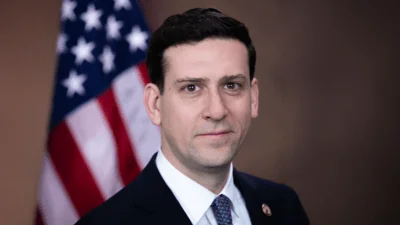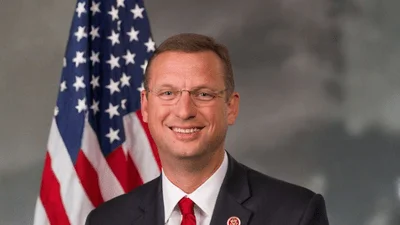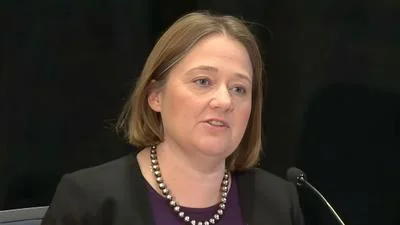CURAÇAO: Tier 2 Watch List†
The Government of Curaçao does not fully meet the minimum standards for the elimination of trafficking but is making significant efforts to do so. These efforts included prosecuting and convicting more traffickers, including a complicit official. However, the government did not demonstrate overall increasing efforts compared to the previous reporting period. Authorities identified fewer victims and, in practice, continued to condition victims’ access to services on cooperation with law enforcement in the case against their traffickers. The government deported potential victims, including Venezuelans, who did not immediately choose to cooperate with law enforcement or did not self-identify as victims, and did so without consideration of possible abuse in the country of origin. Officials conflated trafficking in persons with smuggling, hindering the effectiveness of prosecution, prevention, and protection efforts. Therefore Curaçao remained on Tier 2 Watch List for the second consecutive year.
PRIORITIZED RECOMMENDATIONS:
Provide potential victims, including those who choose not to cooperate with law enforcement in the case against their traffickers, with services and legal alternatives to deportation, especially where victims face harm or abuse in their home country. • Amend the national action plan to allow assistance provision to victims even when they choose not to cooperate with law enforcement in the case against their traffickers. • Amend existing legislation to prescribe penalties for sex trafficking offenses to be commensurate with penalties prescribed for other serious crimes, such as rape. • Provide training to detention center staff on victim identification procedures and routinely screen detained migrants for potential trafficking indicators. • Refer victims to care services where they can begin rehabilitation before requiring commitment to assist a criminal investigation. • Vigorously prosecute and convict traffickers, including complicit officials, sentencing them to significant prison terms. • Increase proactive victim identification among vulnerable populations, such as migrants and individuals in commercial sex. • Reduce the financial barrier inhibiting victims’ access to work permits to incentivize them to stay and assist law enforcement. • Disseminate standard operating procedures for victim identification and referral to law enforcement and detention facility staff and train officials on their use. • Provide specialized care and assistance for trafficking victims, including male victims. • Allocate sufficient resources for anti-trafficking efforts, including protection services and funding for full implementation of the national anti-trafficking action plan. • Produce targeted resources and provide training for local officials to conduct outreach to vulnerable communities through awareness campaigns on workers’ rights, trafficking indicators, and available resources.
PROSECUTION
The government increased prosecution efforts. Article 2:239 of the penal code criminalized sex trafficking and labor trafficking and prescribed penalties of up to nine years’ imprisonment or a fifth category fine of up to $56,000 for offenses involving a victim 16 years of age or older, and up to 12 years’ imprisonment or a fine for those involving a victim younger than 16. These penalties were sufficiently stringent; however, with respect to sex trafficking these penalties were not commensurate with those prescribed for other serious crimes, such as rape.
Authorities initiated one investigation in 2019, compared with four in 2018. Officials reported one additional active investigation from 2018. The government prosecuted four traffickers in one case in 2019, compared with zero prosecutions in 2018, and reported six ongoing prosecutions related to two cases from previous years. Judges convicted six traffickers in two cases during the reporting period, compared with zero in 2018, prescribing sentences ranging from nine months to two years’ imprisonment. The courts convicted one of these traffickers in absentia after he failed to appear for trial. Three sex traffickers had their sentences reduced through appeal or commutation, which weakened the deterrent effect of their convictions. The government reported two cases involving complicit officials, both policemen. A judge convicted and sentenced one complicit official to 12 months’ imprisonment for sex trafficking; the other was detained and awaited prosecution at the conclusion of the reporting period. Law enforcement officials participated in a training on trafficking in persons hosted by the Netherlands government. The government also collaborated with the University of Curaçao to provide trafficking trainings. The Curaçao government remained committed to a 2015 agreement to conduct a minimum of four trafficking investigations a year, despite a lack of personnel. The government continued to address human trafficking and smuggling with the same resources and procedures, frequently prosecuting traffickers with smuggling; officials often conflated the two crimes in point of fact.
PROTECTION
The government further decreased its inadequate protection efforts. In 2019, there was a considerable population of displaced Venezuelans who had overstayed visas and were working illegally in Curaçao. The government claimed the large number of displaced Venezuelans who had overstayed visas and were working illegally in Curaçao constrained law enforcement and likely affected efforts to combat trafficking; yet, Venezuelans, as a group, were at particular risk of trafficking. Authorities identified three victims in 2019, foreign nationals exploited in sex trafficking, compared with 44 victims (16 victims of sex trafficking, 10 victims of labor trafficking, and 18 both sex and labor trafficking) in 2018 and five in 2017. Officials interviewed other women working alongside the three identified victims and concluded they were not victims of sex or labor trafficking. In practice, assistance for victims was contingent upon cooperation with law enforcement efforts to prosecute traffickers. The government’s procedures stipulated it should provide standard services to these victims, including shelter, meals, medical attention, and psychological services. Even so, these services were often difficult to obtain and some were funded by international organizations. The government issued temporary residence permits and arranged housing for all three victims. Officials continued to provide services to 12 previously identified victims, including facilitating the temporary return of two victims to their country of origin for a medical procedure. Victims who were in the country illegally and did not choose to participate in trials against their traffickers were at risk of deportation. Through a separate administrative process, victims were eligible to apply for temporary work permits; however, many victims could not afford the cost.
Front-line responders used standard operating procedures on victim identification and referral; however, it was unclear if staff at migrant detention centers received training on their use. Despite the vulnerability of unauthorized migrants to trafficking, the government did not report any routine screening of this at-risk population. The government did not operate any specialized shelters for trafficking victims; however, authorities provided some funding to NGOs and international organizations to assist victims in need of shelter and other services. NGOs could house a limited number of female trafficking victims in shelters for victims of domestic violence; victims’ movements were restricted if authorities deemed their safety was at risk. When existing shelter facilities reached maximum capacity, the government placed victims in short-term government-funded apartments. Foreign victims were entitled to similar care as domestic victims, but did not have access to publicly funded medical insurance. The government referred child victims of trafficking to guardianship councils for placement in boarding school or foster care; the government did not report how many children it identified or assisted. Authorities reported difficulty arranging housing for male victims due to budget constraints; there were no known shelters for male victims. The government detained and deported potential victims who were in the country illegally, including Venezuelan nationals.
PREVENTION
The government maintained insufficient prevention efforts. The government continued to use the 2017-2021 national action plan but had only partially allocated funds to cover its implementation. The government continued an awareness campaign meant to dissuade potential trafficking victims, including Venezuelan women, from traveling to Curaçao to work in bars and dance venues where they were vulnerable to sex trafficking. The government operated a victim assistance hotline but did not receive any trafficking tips during the reporting period. The government continued to regulate the open-air brothel Campo Alegre, and it kept an official registry of individuals working there. The government provided routine medical screenings, residency permits, and work permits for these individuals. The government made efforts to reduce demand for commercial sex acts, including through a public awareness campaign informing purchasers of potential sex trafficking amongst the women employed in Curacaoan bars.
TRAFFICKING PROFILE
As reported over the past five years, human traffickers exploit domestic and foreign victims in Curaçao. Undocumented migrants, especially the growing population of Venezuelan nationals, are vulnerable to sex and labor trafficking. Traffickers exploit Curaçaoan and foreign women and girls, mainly Dominicans and Venezuelans, in sex trafficking, as well as migrant workers from other Caribbean countries, South America, China, and India in forced labor in construction, domestic servitude, landscaping, minimarkets, retail, and restaurants. Venezuelan migrants are vulnerable to exploitation by Spanish-speakers purporting to offer employment assistance in Curaçao.
† Curaçao is an autonomous entity within the Kingdom of the Netherlands. For the purpose of this report, Curaçao is not a “country" to which the minimum standards for the elimination of trafficking in the Trafficking Victims Protection Act apply. This narrative reflects how Curaçao would be assessed if it were a separate, independent country.
Source: U.S Department of State, Bureau of Oceans and International Environmental and Scientific Affairs








